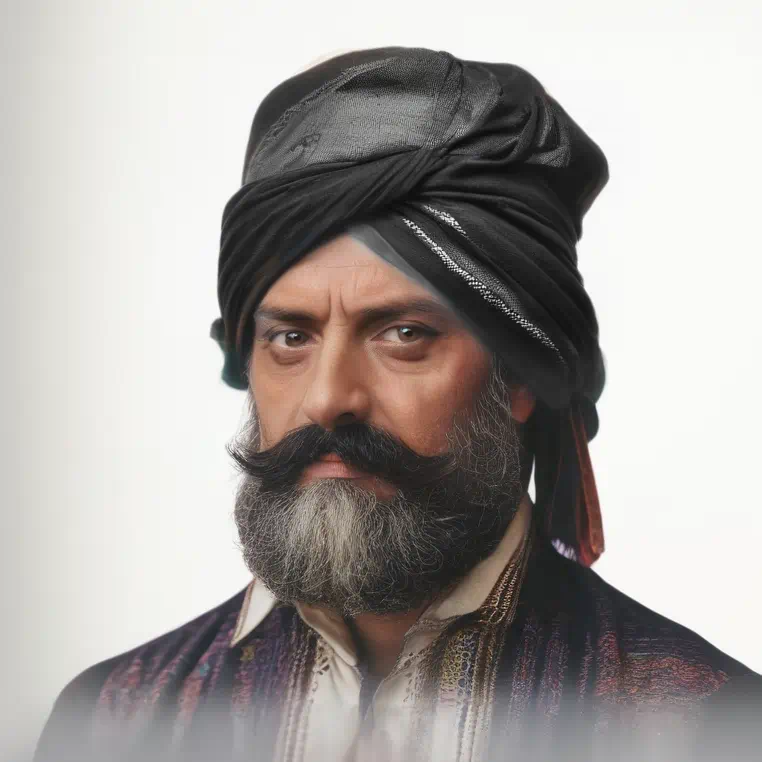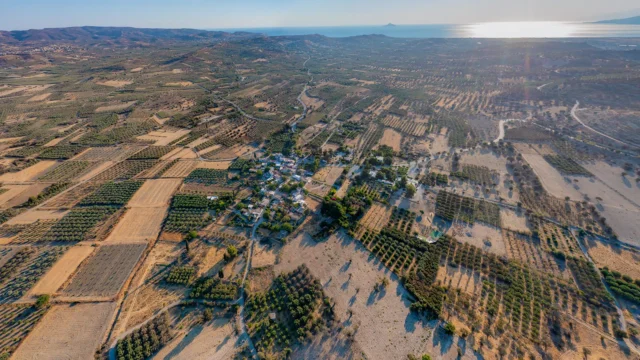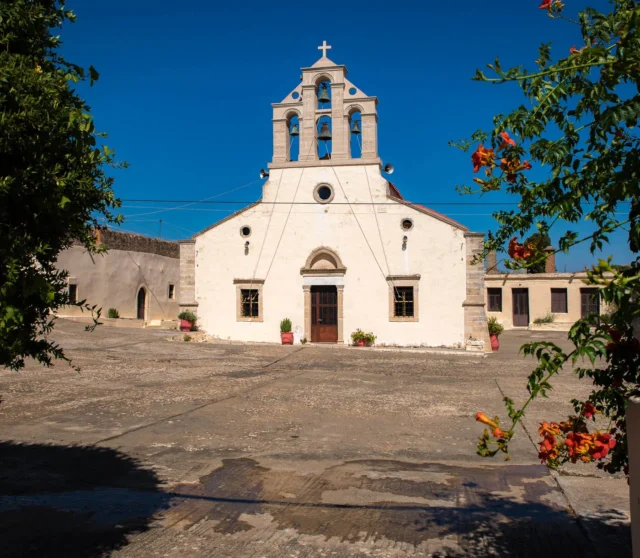
Early Life and Education
Dimitris Varouchas, also known as Logios (meaning “scholar”), was born around 1770 or 1771 in the village of Agios Thomas in Monofatsi, Crete. His father, a priest named Papa-Giannis Varouchas, instilled in him a love for learning and a strong sense of justice. Tragically, his father was killed by the Ottomans when Dimitris was only ten years old, leaving a deep impact on the young boy. His uncle, Hierotheos, a monk at the Apezana Monastery, took over his care and upbringing. Recognizing Dimitris’ intellectual potential, Hierotheos ensured that his education continued despite the challenging circumstances. Due to the ongoing persecution of Christians by the Ottoman authorities, they were forced to flee Crete, eventually reaching Padua, Italy. There, Dimitris had the opportunity to study medicine at the University of Padua, one of the oldest and most prestigious universities in Europe.
Return to Crete and the Path of Resistance
Around 1800, Dimitris Varouchas returned to his homeland, armed with both medical knowledge and a burning desire for freedom. He initially practiced as a physician, treating both Christians and Ottomans alike, earning respect for his skills and compassion. However, the oppressive Ottoman rule and the injustices inflicted upon his people weighed heavily on his conscience. The turning point came when a Janissary named Deli Dervis Xeïnoglou, from the nearby Turkish village of Axenti, murdered the husband of Dimitris’ sister. This heinous act ignited a fire within him, and he swore to avenge his family and fight for the liberation of Crete.
The Rebel Leader: Logios the Hainis
Dimitris Varouchas, now known as Logios, embarked on a path of resistance, becoming a “hainis,” a term used for Cretan rebels who fought against Ottoman rule. He gathered a group of like-minded individuals, including his fellow villager Rogdios, Kampitomathios from Agia Varvara, Mavrozacharis from Kousses, and Nikoloudomanolis from Petrokefali. They operated primarily in the Messara Plain and the surrounding areas, utilizing guerrilla tactics to ambush Ottoman patrols, raid their outposts, and eliminate those who were particularly cruel and oppressive. Logios’ bravery and strategic brilliance earned him the admiration of the Cretan people, who saw him as a symbol of hope and defiance.
The Collaboration with Giannis Xylouris and the Malevizi Campaign
Around 1807-1811, Logios joined forces with his close relative by marriage, Giannis Xylouris from Krousonas. Xylouris’ house served as a safe haven for Logios and his men, providing them with shelter, supplies, and crucial intelligence. Together, they expanded their operations to the Malevizi region, forming a new group and recruiting more Cretans to their cause. Their campaign in Malevizi was marked by a series of successful attacks against Ottoman targets, further fueling the spirit of resistance among the Cretan population.
Betrayal and Martyrdom
Logios’ unwavering determination to fight for freedom ultimately led to his downfall. He had arranged with the slave of Agriolidis, the Arab, to open the door of his house in the village of Agios Ioannis at night so they could enter and kill him. However, the slave betrayed them, and upon opening the door, they were met with gunfire from Agriolidis and his associates. In the ensuing firefight, Logios was mortally wounded, as was his comrade Nikolis Xylouris from Krousonas. Despite his injuries, Logios managed to escape and sought refuge in a nearby cave. He continued to fight back, firing at anyone who approached, until he succumbed to his wounds and bled to death. His body was later found and buried near Phaistos, where his tomb remains a place of pilgrimage and remembrance.
Legacy and Inspiration
Dimitris Varouchas, or Logios, left an indelible mark on the history of Crete. His courage, leadership, and unwavering commitment to the cause of freedom inspired countless Cretans to rise up against Ottoman oppression. The locations associated with his life and struggle, such as Agios Thomas, Axenti, Agios Ioannis near Kamilari, and Phaistos, serve as powerful reminders of his legacy and the sacrifices made by those who fought for Cretan independence. His story continues to be passed down through generations, serving as a source of inspiration and pride for the Cretan people.
Key points
-
- Born: 1770, Agios Thomas, Monofatsi, Crete
-
- Died: May 6, 1811, Agios Ioannis, Phaistos, Heraklion
-
- Cause of Death: Gunshot wounds
-
- Resting Place: Near Phaistos
-
- Nationality: Greek
-
- Legacy: A prominent figure in the Cretan resistance against Ottoman rule, known for his bravery, strategic brilliance, and unwavering commitment to the cause of freedom.




